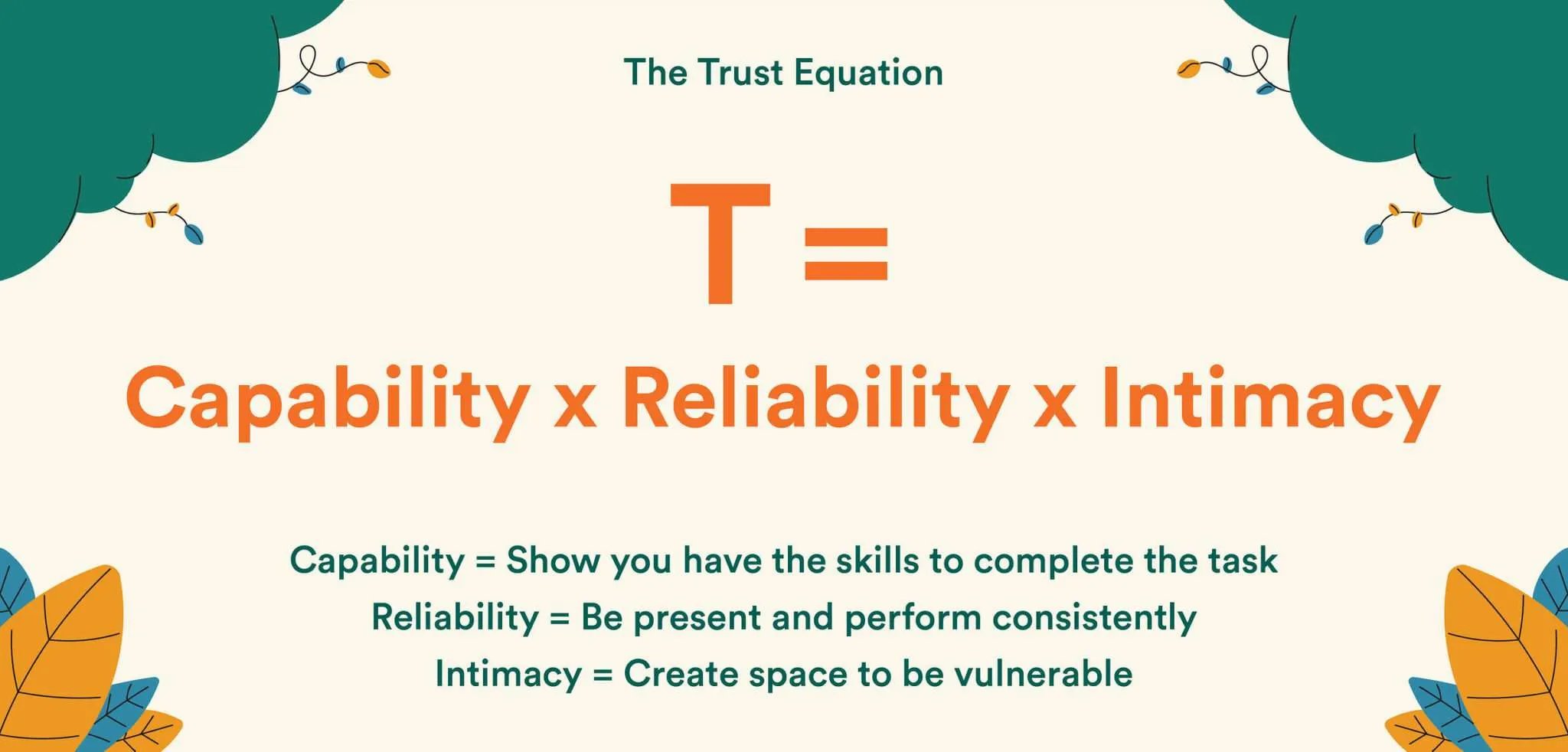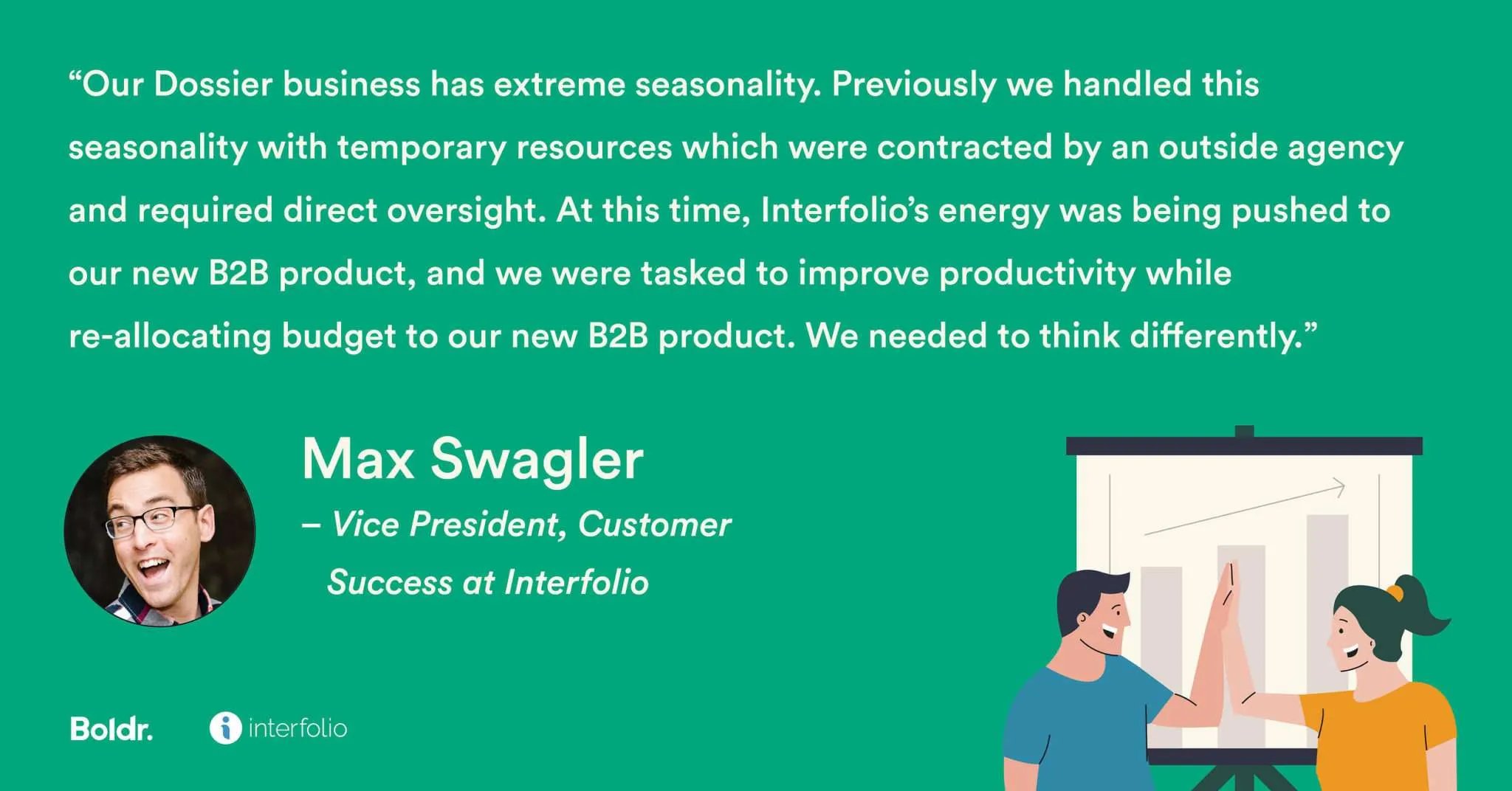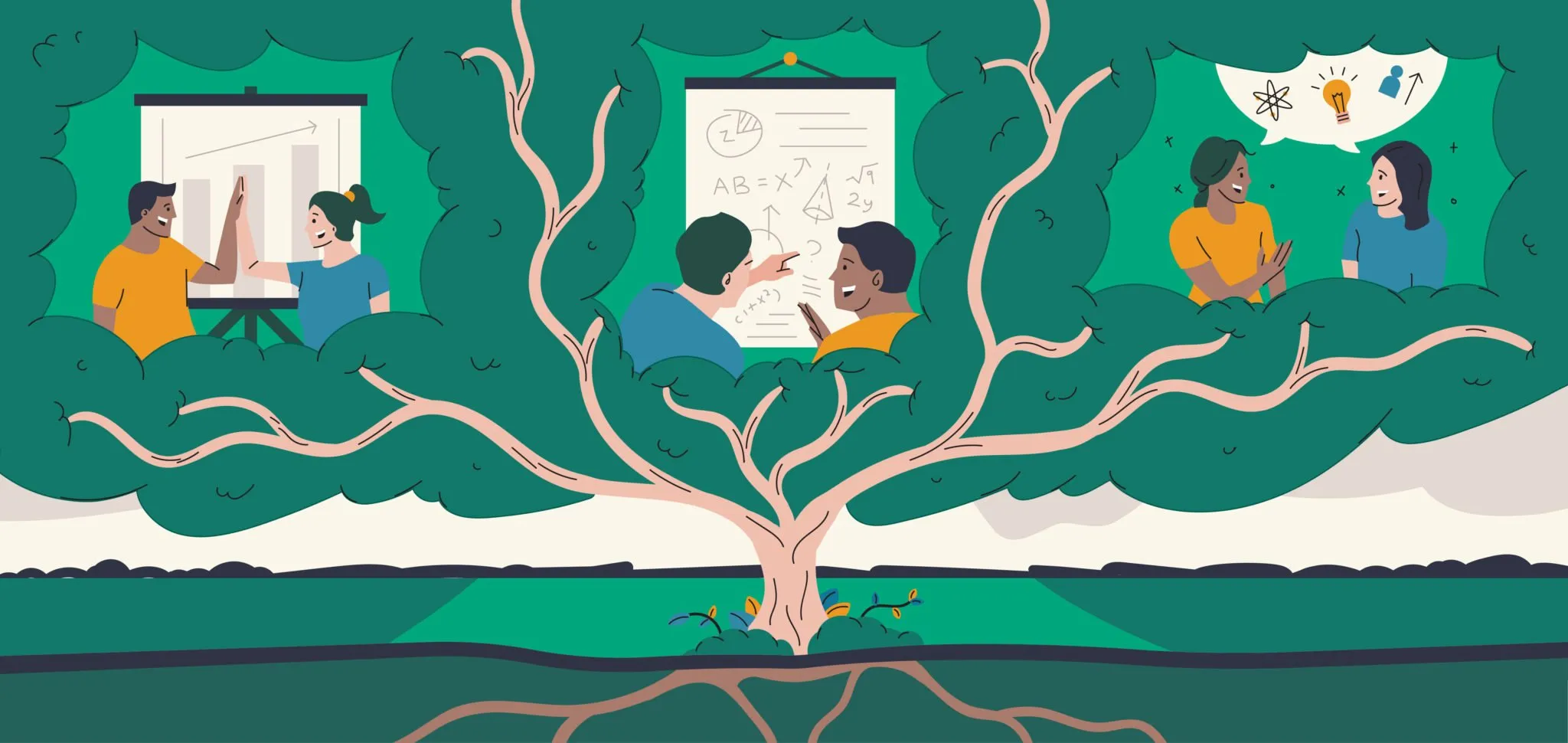
In my previous blog post, I talked through Simon Sinek’s “The Infinite Game,” broke down the book’s core principles, and mapped them onto Boldr’s ethos.
One of the principles, Building Trusting Teams, has been paramount for Boldr’s growth. I believe that trust is not only critical for our internal teams, but also for building trusting partnerships with Clients.
Building trusting teams requires ongoing reformulation and collaboration. I feel fortunate that my Coach Brian guided me through Boldr’s early days. He taught me and our Client Success Organization a simple framework for building trust that has held true:

Building trusting partnerships between Boldr and Interfolio (our first Client), brought this equation to life.
A bit of background. Interfolio, an enterprise technology company, focuses on building collaboration platforms for the global higher education market. They are on a mission to empower the global academic community to fully support and understand scholars’ journeys.
Over the last five years, Interfolio acted as the catalyst for us to expand into new services, while we, Boldr, created and trained new teams to solve their ever-evolving business challenges.
Through demonstrating capability, proving reliability, and fostering intimacy, the tree of trust was able to grow.
Here are the roots Boldr planted to get there:
Capability
In 2014, Max Swagler was Interfolio’s Customer Service Manager (he is now Interfolio’s Vice President of Customer Success). Max and I had never worked together, and at the time, I was new to the outsourcing sphere. Despite limited trust in each other’s competencies, our leadership teams challenged us to collaborate on a time-sensitive project: Interfolio needed to improve their customer experience metrics for their Dossier business, while also reallocating spend to Interfolio’s new product. My involvement in migrating this work to the Philippines was a major opportunity to showcase our fast learning and adaptable team. Also, managing this initial project seamlessly would demonstrate our potential to handle Interfolio’s increased volume during their annual busy season.

We had eight weeks to hire, train, and perform against Key Performance Indicators (KPIs). We built a project plan, hopped on twice a week calls, and held each other accountable. When challenges arose or the Boldr team missed the mark, Interfolio’s honest, critical feedback is what allowed us to show we were capable. Feedback planted our roots, and attuned us to the Client’s needs. Feedback made us an extension of their HQ team.
Boldr streamlined Interfolio’s workflow, and in turn, fine-tuned their operational performance. We accomplished the desired outcome, but more notably, we enjoyed solving problems together. A lot of teams are capable, but collaboration and feedback established our partnership and highlighted Boldr’s willingness to adapt.
Also read: Employing Outsourcing and Automation to Scale a Support Experience
Reliability
After building out Interfolio’s Dossier Support team, we were eager to continue growing our partnership. Interfolio communicated our value, and in turn, wanted Boldr’s take on next steps. One of our suggestions related to forecasting customer support and fulfillment trends for their Leadership team. To Boldr, this preparedness for the future was key, and Interfolio agreed. Our Data Science team created models to help Interfolio budget their resources and manage their Support department more effectively.
Interfolio was delighted with the outcome, but even more so with our initiative and investment in their success. They began asking us more complex questions and sought our input for a range of analyses. With each project, Interfolio began to trust the consistency of our ideas, our communication, and our execution. Interfolio’s increased comfort and ability to rely on our support led to Boldr’s potential to handle Quality Assurance (QA) Engineering.

This was a first for us. Boldr had never built a QA Engineering team before. However, through demonstrating our capability to execute their vision time and time again, Interfolio’s confidence in us allowed our branches to grow.
Establishing reliability has taken time. We nurtured our partnership through delivering on initial promises, integrating feedback, and expanding into more complex work streams. With this bedrock of trust, Interfolio continues to pull us into their strategic conversations, such as, “do you think we need to hire internally, or is this something your team can work on?”
Boldr feels like a part of Interfolio’s team, so when these questions are asked, we always have their best interest in mind; we only trial it out if we believe we can deliver. This best interest feels mutual. Through piloting new workflows, Boldr has learned, tested, and grown as a Company, and we have Interfolio to thank for their faith and knowing our true potential.
Interfolio has given Boldr a lot of firsts. Our first Client. Our first Quarterly Business Review. And our first Client to expand with us into QA Engineering. We’ve been fortunate to successfully deliver on most of these experiments. While some had mixed results, our collaboration during these challenging times only made the roots of our partnership stronger.
Intimacy: Aligning on Shared Values
There are moments in business partnership when collaborators take a leap forward, and moments when they land on solid ground. Fostering intimacy is what’s carried us forward since day one. Developing intimacy in a business partnership may seem soft or superfluous, but we all crave and run on connection.
The word intimacy suggests a closeness that is built over years, but in my experience with Clients, intimacy equates to alignment. What allowed us to build an authentic and intimate relationship is a mutual belief in each other’s purpose. Interfolio believes in our purpose: at Boldr, we exist to help people grow and connect.

I believe Simon Sinek’s breakdown of Trusting Teams can be applied to fostering vulnerability in a budding Client relationship. When working with Max, we had our corporate structures to guide us, but it was our personal belief systems that bonded us. Interfolio values radical transparency, and Max and I created space to process our own subjective perspectives, outside of the workplace, often over coffee or the occasional beer. This allowed us to understand each other’s intentions and foster the sense of safety required to take risks. By bringing awareness to and naming our long-term commitment to one another, we could be vulnerable and discuss growth points unfiltered.
Related Read: Building a Global, Purpose-Driven Outsourcing Organization
Max and I shared our own personal dreams and ambitions. For example, Max has been dreaming of ways to create opportunities through our partnership to maximize team members’ potential. It is values like this that illustrate Company intention and ethos. It shows where you invest your time and energy and where your roots reside. Max believes that our successful partnership is because of our alignment across corporate values and stakeholder missions, “It’s been Interfolio’s mission since day 1 to prioritize team member development, watching the Boldr team members graduate into more complex roles like QA Engineering has been a dream come true for us and we are excited about the path ahead.”
When I think about the successful partnerships built in my career, the Interfolio-Boldr partnership stands out as a true pinnacle of trust. I aspire to embody the aforementioned framework with newer and future partners. Through delivering on our initial promises, we show we are capable. Through consistently remaining present and proving our value, we show we are reliable. Through nurturing values-based alignment, we make space for intimacy. When we plant these roots together, water them, and identify areas for growth, we build the tree of trust.


